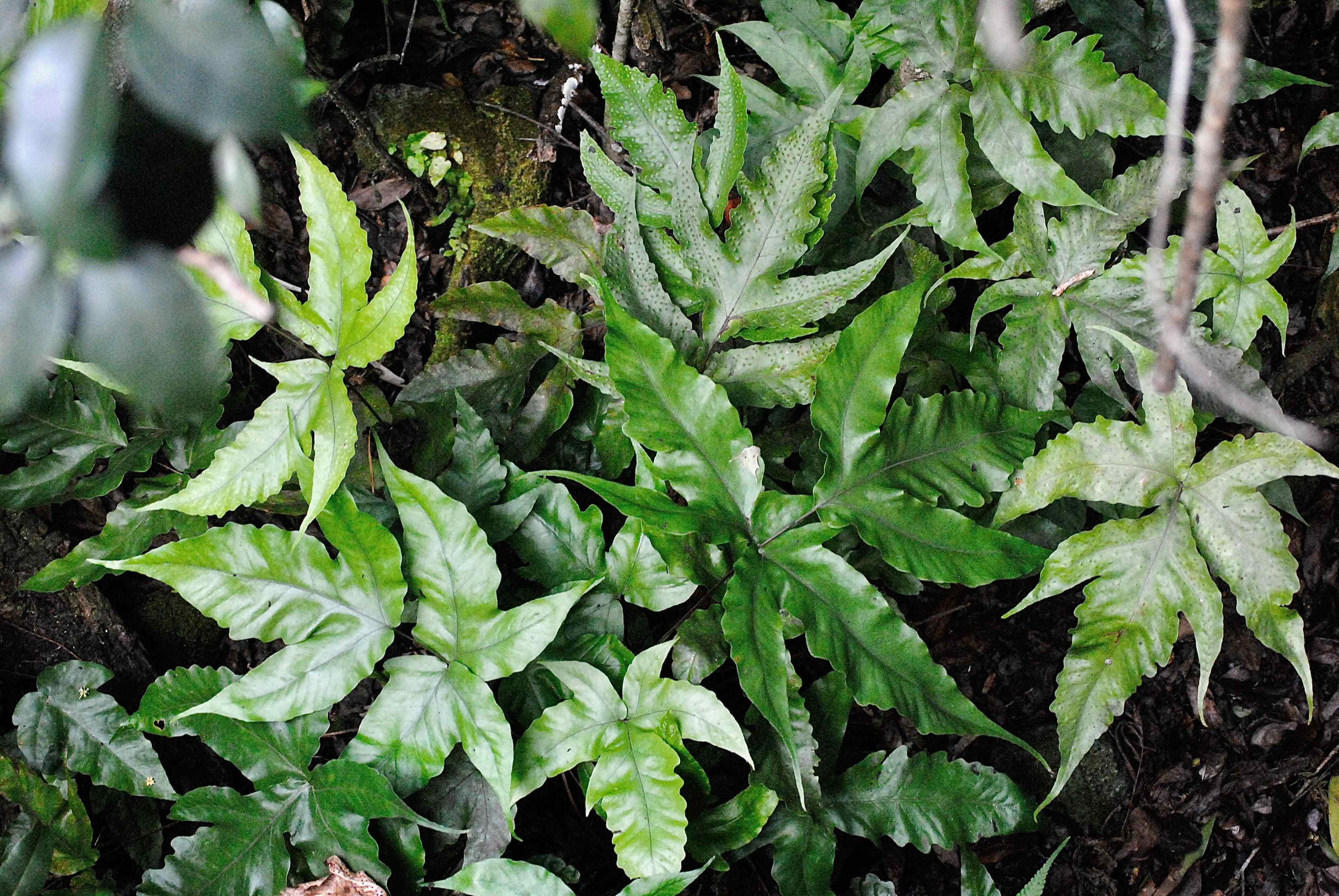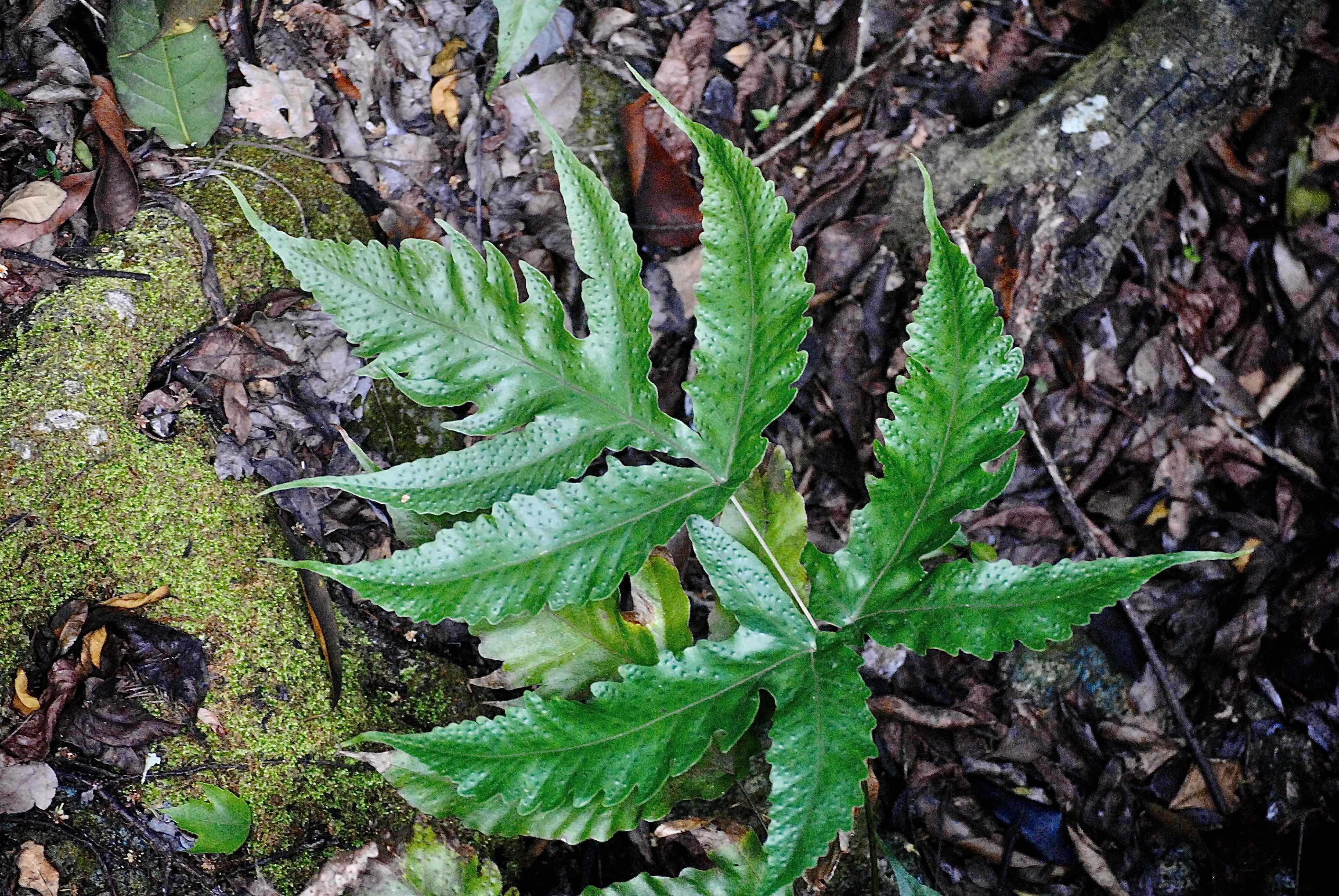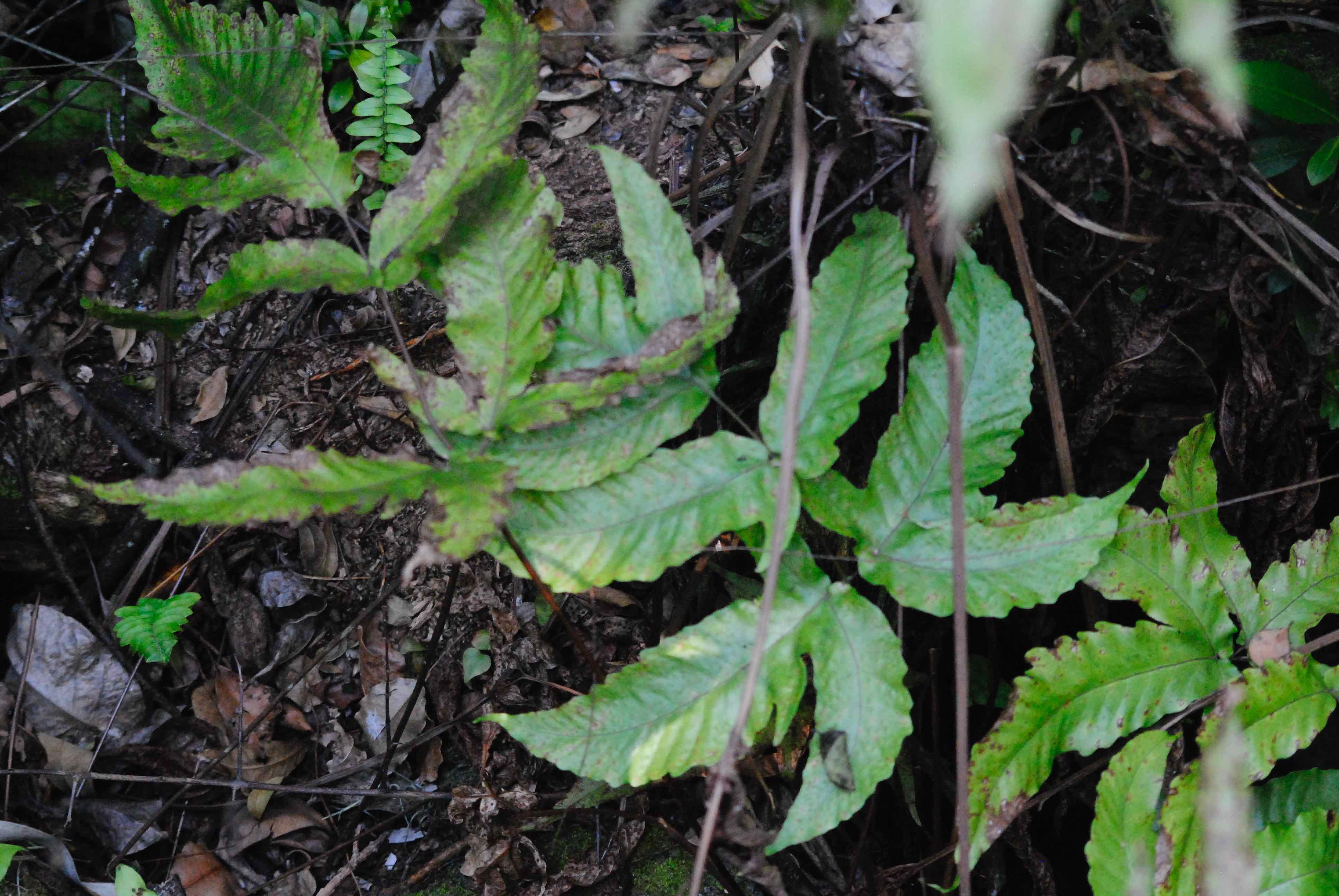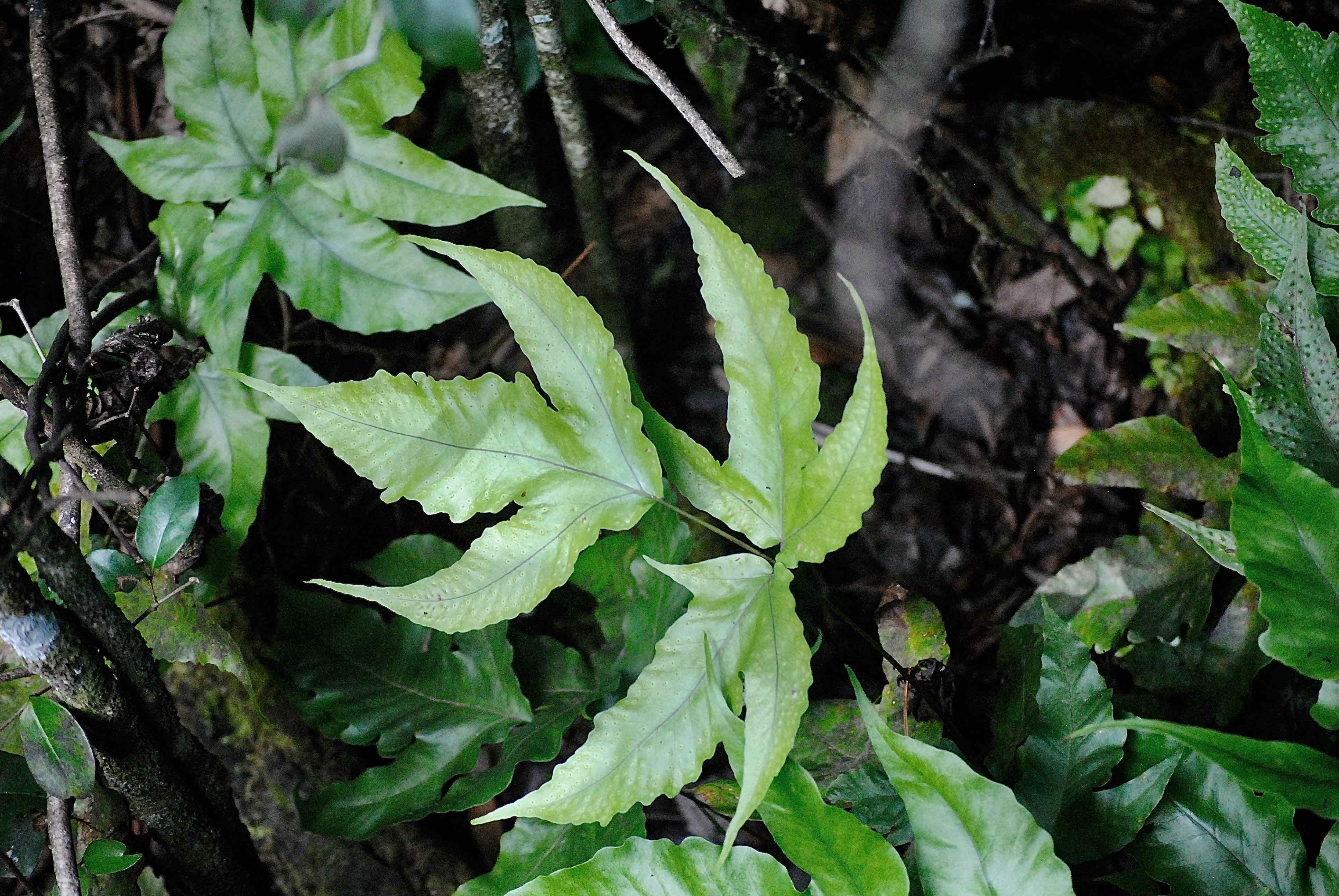
Broad halberd fern, photographed at Fern Forest Nature Center, Coconut Creek, Broward County, in March 2014.
Broad halberd fern, Tectaria heracleifolia, is a plant that likes it dark, wet and rocky. It's a rare plant. So rare, in fact, that it's state listed as threatened.
Broad halberd fern is part of group of ferns that like to grow on or near limestone ledges, outcroppings and sinkholes. In some parts of its range it will grow around cave openings. It also needs shade and moist soil in order to prosper. It has two cousins that are only found in the pineland sinkholes of Miami-Dade County, both of which are rare in the wild and might in fact be extinct within the bounds of South Florida. It also has a cousin, incised halberd fern, Tectaria incisa that the Florida Exotic Pest Plant Council has determined to be invasive.
Our guy, by contrast, is definitely alive and kicking, though still rare within the confines of the Sunshine State, where it is a native. It also has a bit of an odd range within the state. It's found throughout the southeastern coastal counties of Miami-Dade, Broward, Palm Beach and Martin, but it's also found in Citrus and Hernando counties, well to the north and to the west.
It's also found in five counties in Texas, according to the U.S. Department of Agriculture's PLANTS Database. In Texas, it's known to grow on the edges of railroad tunnels and cave entrances and in shady canyons, as well as the usual limestone outcroppings.
Broad halberd fern is also native to parts of the Caribbean, including Puerto Rico, southern Mexico, Central America and the shoulders of South America, including Peru.
A halberd is a kind of battle axe atop a long pole, with a blade on one side, a pick on the other and spear-like point at the top, and the leaves of the broad halberd fern do somewhat resemble a medieval weapon of sorts. The scientific name of our guy, heracleifolia, comes from the plant's overall resemblance to a plant called cow parsnip in the Heracleum genus. There are some 200 kinds of halberd ferns worldwide, most of which grow in tropical places.
Broad halberd fern grows in swamps and wet hammocks on limestone outcroppings and in sinkholes, places with plenty of shade. Famed naturalist John Kunkel Small said the plant grows "largest" in "well-like" sinkholes. The leaves can be large, the plant spreads via rhizomes, or underground stems, and forms small colonies, creating a carpet effect. The leaves are shiny green, leathery to the touch, deeply lobed or cut and sort of five-sided, or pentagonal, in shape. Like all ferns, broad halberd fern doesn't produce flowers but rather has spore-producing structures called spori found on the undersides of leaves. The outline of the spori can be seen in the main photo on this page.
The plant's good looks gives it one edge in the fight for survival: it's used as an ornamental.
The Institute for Regional Conservation places halberd ferns, including our guy, in the family Tectariaceae; other sources put it in Dryopteridaeceae, the wood fern family.
Fern Forest Nature Center



